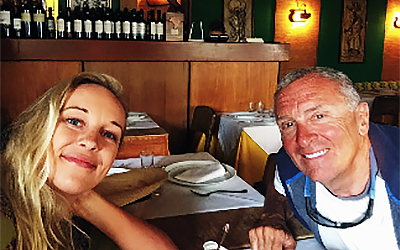Crash Course of Rio
While traveling to Río de Janeiro for one week may seem ridiculous to some, it seemed to make perfect sense to us when we were brainstorming things to do for the small amount of time I had off from work. Mendoza? Punta del Este? No, those options were not only too easy, but we had both explored different parts of both Argentina and Uruguay before. We wanted something that would prove to be more of a challenge in every possible way: Visas, flights, hotels, and things to do. So, it made perfect sense to book a flight to Río de Janeiro, a place we both had never been to.
Río de Janeiro is recognized as one of the world’s most beautiful and interesting urban cities. The name was given to the city’s original site by Portuguese navigators who arrived on January 1, 1502, and mistook the entrance of the bay for the mouth of a river (rio is the Portuguese word for “river” and janeiro the word for “January”). Río became the colonial capital in 1763 and was the capital of independent Brazil from 1822 until 1960, when the national capital was moved to Brasília.
Today, it is known for its beaches, peaks, ridges and hills, all partly covered by tropical forests. The city is the center of leisure for Brazilian and foreign tourists, with people wearing bathing suits around every corner throughout the entire year. I think it is safe to say that when I moved to Buenos Aires, I thought it would look and be something like Río… I was only a little (okay, a lot) off.
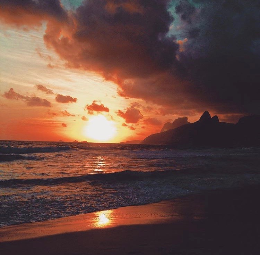
Sunset at Ipanema Beach
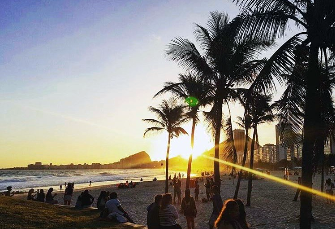
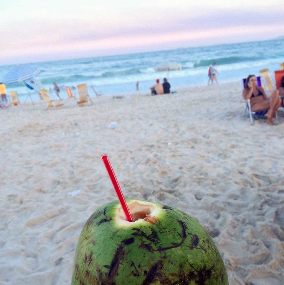
In the short amount of time we had in Brazil, Río provided us with everything one could ask for when on vacation: Beach, ocean, sun (and sunburns), food and alcohol. For those who have never been to Brazil, let this be a guide as to where to eat and more importantly, what to eat in the city.
Acai, in my opinion, is the world’s greatest discovery. This berry, native to Brazil, has been around for thousands of years and was originally used in the Amazon jungle to treat a variety of ailments. It is grown on large palm trees, the same trees where we get our hearts of palm, in the Amazon rainforest. It has only recently been used in other countries, such as the United States, since the 1990s. What I did before acai, I honestly can’t tell you. I have blocked all prior memories from my mind. You can find this berry literally everywhere in Brazil, so we were lucky enough to enjoy one every morning for breakfast. The traditional way to serve it is with granola and an occasional banana, but the beauty of an acai bowl is that you can dress it up with whatever ingredients you want!
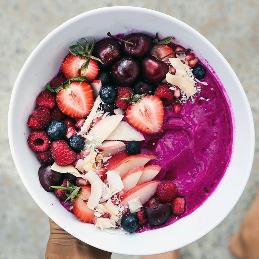
Homemade acai bowl, made by yours truly : )
Feijoada is a typical Portuguese dish that comes from feijão, which means “beans.” The basic ingredients are therefore black beans with fresh pork or beef. It is also served with rice, assorted sausages (which are also cooked in the stew), yellow potatoes, crunchy pork cracklings, fresh shredded kale, farofa or toasted cassava flour and orange slices, which are meant to aid in digestion. Adapted from the food of slaves, it is now regularly eaten for lunch on Wednesdays and Saturdays. Why those days only? No clue, but the old fashioned dish takes up to 24-hours to make, which is why most Brazilians go out to a restaurant to eat it. We were able to do this exact thing, enjoying a huge traditional meal for lunch on a Wednesday, eating at a place recommended by the owner of the bike company I work for, called Casa de Feijoada. Seems appropriate for a name. This place is located on a side street on one of the most popular beaches in Río, Ipanema.
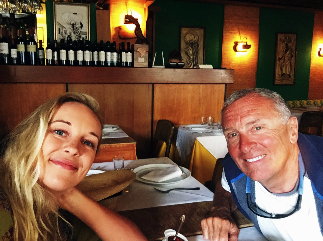
Enjoying lunch at Case de Feijoada, Ipanema Beach
Caipirinhas are Brazil’s national cocktail, made with cachaca, sugar and lime. Upon ordering one, you may think it looks like or is the same thing as a mojito, but they are actually quite different. The key difference is the cachaca, which is made from the fermentation of fresh sugarcane juice that is then distilled to produce the alcohol. Because nothing else is added except for the three ingredients, you can say “chau” to whoever you are with after just one, especially after a long day in the ocean and roasting in the sun. This drink is often ordered when beginning a meal as a way to “clean the Brazilian palate,” some restaurants going so far as to bring you a shot of cachaca automatically without charge.
Last but not least, if you are looking for an absolutely memorable dining experience with great food and great service (who isn’t?), you have to go to the Copacabana Palace. The palace is not only literally a palace, but has been frequently visited by people such as the Rolling Stones, Michael Jackson, Madonna, Elton John, Marilyn Monroe, Walt Disney, need I go on? Knowing this, be prepared to pay a little bit extra. The hotel has a number of different restaurants to choose from, but the one we enjoyed was their Italian option, called Cipriani. We sat right by the window, overlooking their outdoor pool right across the street from the beach and ocean. The restaurant has a great wine list, ice cold beers, and a tiramisu to die for. Just don’t forget to bring long pants 🙂
Overall, our experience to Río de Janeiro was a success. Seeing it for one week only was not nearly enough, but we are both inspired to go back when and if we can and visit the city and other parts of Brazil more thoroughly. If Brazil is not on your list of destinations, it should definitely be added (behind Buenos Aires of course!) and visited sooner rather than later. Winter break anyone?

